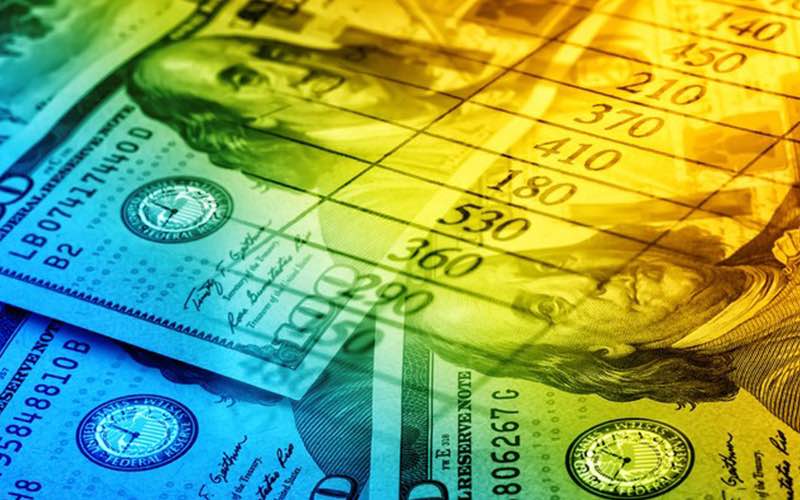Is the US economy weakening? Cracks are spreading beneath the GDP halo, putting pressure on the dollar outlook.
2025-10-09 09:45:11

The economy was expanding at a solid pace before the government shutdown began on October 1, and despite warnings of a slowdown, gross domestic product was expected to exceed average levels in the third quarter.
But the economic fatigue is already obvious: the job market has basically stagnated, consumer confidence continues to decline, inflation has risen again, and companies are still struggling to survive in response to unpredictable tariff policies.
Government shutdowns typically don't cause a major economic shock, but the current impasse is exacerbating uncertainty. Key economic reports that investors and businesses rely on for decision-making have been suspended, making spending and investment decisions more difficult.
“In the absence of government data, private sector decision makers, from businesses to investors, are becoming increasingly cautious,” said Gregory Daco, chief economist at EY Parthenon.
Is the third quarter economic illusion?
The current signs of economic weakness may not be reflected in the US third-quarter data. Gross domestic product (GDP), a key economic barometer, is expected to maintain exceptional growth for the second consecutive quarter. The Atlanta Fed's GDP forecast model suggests a 3.8% annualized growth rate in the third quarter, the same as in the second quarter. While Wall Street forecasts are more conservative, most institutions still project third-quarter GDP growth above 2%, exceeding what economists consider an ideal growth rate for the US economy.
However, third-quarter GDP data won't be released until the end of October at the earliest, and if the government shutdown persists, the release could be further delayed. More importantly, even when the data is released, it will likely be difficult to reflect the current state of the economy. In the absence of official data, market visibility continues to decline.
Financial markets abhor uncertainty. Without official data (such as non-farm payrolls) to guide them, investors struggle to assess the true health of the US economy and the Federal Reserve's policy path. This can lead to risk aversion. However, since the US itself is the source of uncertainty, funds may not necessarily flow into the US dollar for safety; instead, they may flee dollar assets due to uncertainty about pricing.
That's why Wall Street is turning to private economic data—even indicators that don't usually get much attention. Take the ADP September employment survey, for example: Data from the company, which processes millions of payrolls for thousands of businesses, showed that payrolls contracted for the third time in four months—and, excluding the pandemic, for the first time in 15 years.
Surveys of U.S. business executives also reflected widespread anxiety: ongoing trade disputes, rising costs pushed up by tariffs, and weak demand caused by dwindling consumer spending are creating multiple pressures.
Susan Spencer, chair of the Manufacturing Survey Committee of the Institute for Supply Chain Management, admitted: "These are definitely not ordinary times. Until the uncertainty is resolved, companies will continue to wait and see."
U.S. consumers are also worried about the economic outlook
While current consumer spending is still able to stave off a recession, inflation remains a persistent concern. Meanwhile, a weakening job market, making job hunting more challenging, has become a new concern. This economic anxiety may be starting to significantly impact consumer decisions—take credit card use as an example: in August, revolving credit balances in the United States declined for the third time this year, and credit card debt balances saw their first year-over-year decline since the pandemic.
Executives at several major home improvement retailers have revealed that consumers are postponing major home renovation projects such as bathroom renovations and kitchen remodels. Both Home Depot and Lowe's told investors last month that DIY enthusiasts and other customers have scaled back major renovation plans, either postponing projects indefinitely or switching to smaller projects.
This newfound caution is also reflected in Americans' online search behavior. Neil Dutta, head of macroeconomics at Renaissance Macro Research, noted in a recent research report that online searches for bathroom and kitchen renovation plans have fallen sharply in the past two months.
These signs indicate that the US economy's internal momentum is weakening. An economy with slower growth expectations becomes less attractive to international capital, leading to capital outflows and thus pressuring the US dollar.
Economists classify this type of search data as a "soft" economic indicator—it's more volatile than "hard" data like inflation and unemployment. But there's no doubt that the latest hard and soft data point to the same conclusion: the U.S. economy is weakening .
The complex situation of the US economy, which appears to be "sound on the surface but weak underneath," coupled with the uncertainty caused by the government shutdown, is expected to put downward pressure on the US dollar index. On Thursday (October 9), the US dollar index's upward momentum ran out, failing to continue the rebound of the previous three trading days. The US dollar is more likely to weaken rather than strengthen in the short term.
At 09:44 Beijing time, the US dollar index was at 98.72.
- Risk Warning and Disclaimer
- The market involves risk, and trading may not be suitable for all investors. This article is for reference only and does not constitute personal investment advice, nor does it take into account certain users’ specific investment objectives, financial situation, or other needs. Any investment decisions made based on this information are at your own risk.





















